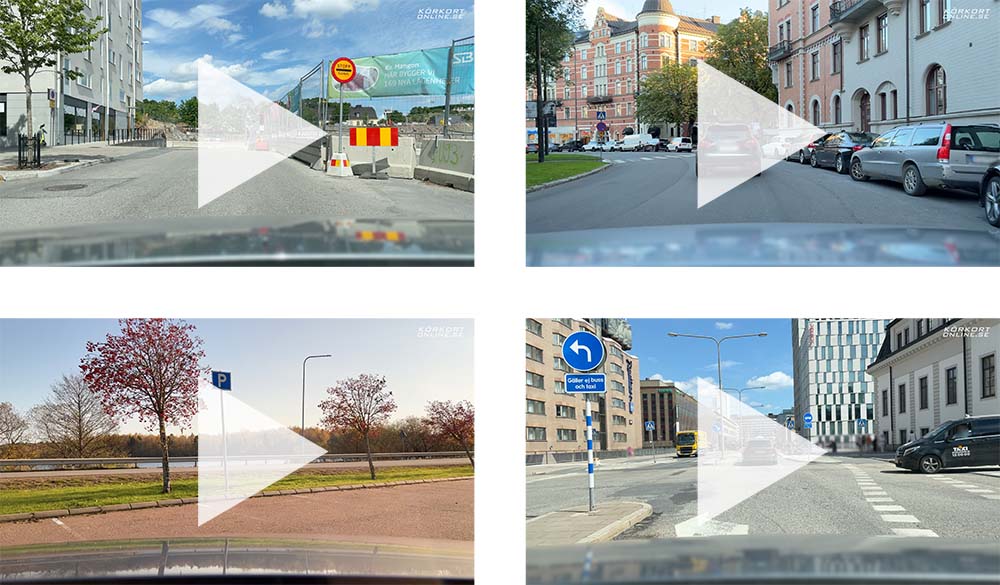Crash safety, car protection – driving licence theory
Crumple zones

1: Crumple zones
These areas are crumple zones, which means that they have been designed to crumple in the event of a crash.
Why should they crumple? Is it not better for them to be very hard?
– No, compare a collision with jumping off a roof. You would want to have something soft to land on. The same thing applies to a crash – without soft crumple zones, there will be a dead stop, which means that your body would be subjected to extreme stress.
Note, however, that the crumple zones are not too soft, as this would lead to you being crushed in the crash.
2: Particularly vulnerable areas
The sides are more vulnerable as the surface for absorbing the force of the collision is much thinner. Car manufacturers attempt to solve this problem by inserting special pillars that distribute the crash force, and by installing side airbags.
Safety belt (seat belt)
- The safety belt is an extremely good form of crash protection. It is easy to use and the chances of surviving a crash increase dramatically.
- You have to use it, as it is required by law. The driver is responsible for passengers under the age of 15 using a seat belt.
- Tighten the belt properly so that it sits close to the body (remove thick jackets).
- There are two main types of belt in private cars:
- Two-point belt (waist belt): Only fastens over the waist. This was previously the most common type, and is still sometimes used for the middle seat in the back.
- Three-point belt: The belt runs across the waist and then diagonally across the body towards the neck. This provides better protection than the two-point belt. Note that the upper part of the belt should sit as close to the neck as possible and not out on the shoulder.
- Belt tensioners are found in newer cars. This is an automatic system that pulls the belt hard in the event of a crash. This means that you are better protected.
- For pregnant women, it is better that the belt sits under the belly so that the baby is not squashed. If you are far into your pregnancy, it may be best not to drive at all, as the child runs the risk of being injured by the steering wheel and airbag in the event of a collision.
Airbag

Disconnect the airbag if a child safety seat is used on the passenger side.
- Sit at least 25 cm from the airbag – otherwise it can injure you when it inflates.
- It takes just 0.1 seconds for the airbag to fill up.
- Can lead to serious injury if the seat belt is not used at the same time.
- Triggered at speeds over 20–30 km/h.
- There are different types of airbags:
- In the steering wheel: This is the most common type, which protects the driver in the event of a collision.
- Front passenger seat: Protects the passenger in the front. Note that it must be disconnected if a child safety seat is used.
- Side airbags: Smaller airbags which protect you in the event of a collision from the side.
Head restraint
- The head restraint is not a comfort feature – it is an important form of protection for the neck in the event of a collision.
- Position it so that your head does not pass over the top of the head restraint when leaning back.
Whiplash
- Whiplash injuries are sustained when the neck is thrown about violently in the event of a collision, damaging the neck muscles.
- Common in the event of rear-end collisions.
- A whiplash injury often passes, but can remain for a long time and can also lead to muscle pain, headaches and difficulties sleeping.
- Car manufacturers are always striving to improve protection for the neck in order to avoid whiplash injuries.
Latest forum posts
- << Brakes
- Crash safety ↑↑
- Child safety seats >>


